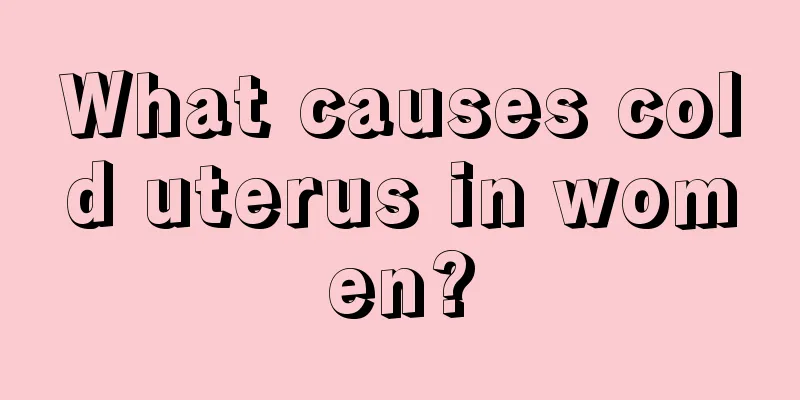Sharp and wet baby after normal delivery

|
Pregnant women with genital warts can also give birth smoothly, but their genital warts will usually worsen after giving birth. They must improve their own immunity during the confinement period and take some medications for treatment reasonably. They should try not to harm their baby's body and avoid affecting normal breastfeeding. They also need to find out the real cause of genital warts before treatment. The treatment of genital warts must adopt comprehensive treatment. 1. Treat the cause (foreskin is too long, vaginitis, balanitis, gonorrhea, etc.). 2. Improve the body's immunity. 3. Chemotherapy (1) 0.5% podophyllotoxin tincture (or 0.15% cream) is suitable for the treatment of genital warts with a diameter of ≤10 mm, with a clinical cure rate of about 90%. The total wart area should not exceed 10cm2, and the total daily medication should not exceed 0.5ml. After application, the local medication should be allowed to dry naturally. The main side effects are local irritation, which may include itching, burning pain, redness, swelling, erosion and necrosis. In addition, this drug is teratogenic and should not be used by pregnant women. (2) 5% imiquimod cream is used to treat genital warts, with an average wart clearance rate of 56%. The advantage of this therapy is the low recurrence rate, which is about 13%. The appearance of erythema is not an indication for discontinuation of medication, but the appearance of erosion or damage requires discontinuation of medication and a follow-up visit. The doctor will treat the wound and decide whether to continue the medication. Side effects are mainly local irritation, which may include itching, burning pain, erythema, and erosion. The safety of imiquimod during pregnancy has not been established and it is contraindicated in pregnant women. (3) 80% to 90% trichloroacetic acid or dichloroacetic acid must be treated by a doctor. When using, apply a small amount of liquid medicine on the wart lesion and wait for it to dry. At this time, a layer of white frost will form on the surface. During treatment, care should be taken to protect the surrounding normal skin and mucous membranes. If there is an excess of topical medication, talcum powder, sodium bicarbonate (baking soda) or liquid soap can be applied to neutralize excess, unreacted acid. This medicine should not be used for hyperkeratosis or large, multiple, or extensive warts. Adverse reactions include local irritation, redness, swelling, erosion, etc. 4. Cryotherapy Using liquid nitrogen at a low temperature of -196℃, the freezing method is used to treat genital warts, which promotes the necrosis and shedding of wart tissue. The operation is simple, efficient, and easy for patients to tolerate. This method is suitable for condyloma acuminatum with a small number and small area. It can be treated 1 to 2 times with an interval of one week. 5. Laser treatment Usually CO2 laser is used to treat genital warts by cauterization. Single or a small number of warts can be treated once, while multiple or large warts can be treated 2 to 3 times, with an interval of one week. |
<<: What does the dark area of uterine rectal fossa mean?
>>: What is the cause of left hip pain in women?
Recommend
Preventing relapse and adhering to medication is the key - Psychiatric medication management
This is the 4982nd article of Da Yi Xiao Hu...
Can pregnant women eat dried fruits?
Speaking of dried fruits, the nutritional value i...
How to treat berry fungal vaginitis
Berry fungal vaginitis is a common vaginal inflam...
Keep these 23 health tips in mind and spend a healthy and safe Chinese New Year! Save them now!
Every household has started the busy schedule bef...
What is the dark black vaginal discharge?
For female friends who have dark black vaginal di...
Can pregnant women drink Sprite in the early stage?
Delicious cola is a favorite of many people. When...
Infographic: 7 things you should know as an Android user
7 Things You Should Know About Android There are ...
Is dysmenorrhea caused by uterine cold? What causes dysmenorrhea?
Female friends are not unfamiliar with dysmenorrh...
Uncovering the seven deadly sins of vaginal bleeding
Vaginal bleeding is bleeding from any part of the...
Causes of fishy odor in the lower body
For various reasons, many women will suffer from ...
How to stop bleeding during menopause, three methods of stopping bleeding
The reason for menopausal functional uterine blee...
What are the taboos of eating durian thousand-layer cake? What can't be eaten with durian cake?
Durian is a well-known tropical fruit that contai...
Extreme pain after cervical balloon placement
When a woman is giving birth to a baby, she can n...
Can I have sex at 13 weeks of pregnancy?
You cannot have sex during the 13th week of pregn...









